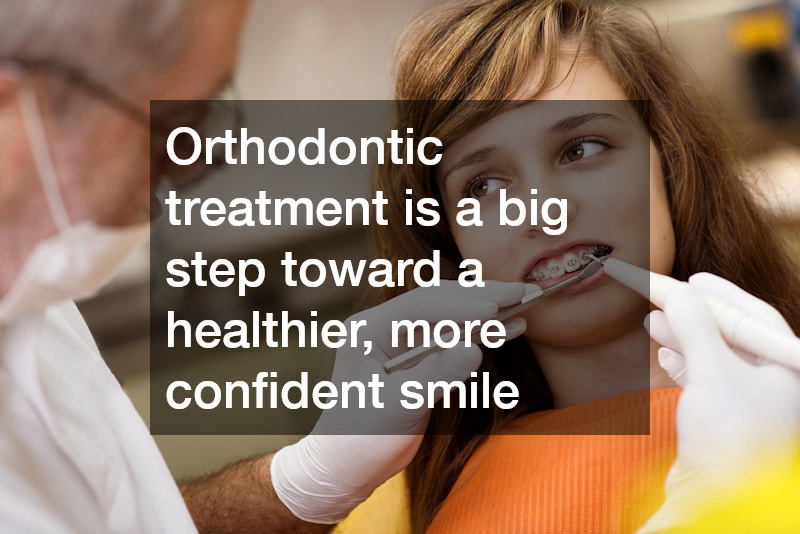Considering getting braces can feel like stepping into unknown territory. Whether you’re doing it for yourself, your teen, or your child, orthodontic treatment is a big step toward a healthier, more confident smile. While braces have been around for decades, modern advancements have made them more effective, comfortable, and customizable than ever before.
This article will help you understand the fundamentals of getting braces, including how they work, the different types available, how long treatment usually lasts, and what to expect along the way. By the end, you’ll have a clearer picture of what’s ahead—so you can begin your orthodontic journey with confidence.
How Do Braces Work?
Braces work by applying gentle, continuous pressure to your teeth over time. This pressure gradually moves the teeth into their proper positions, correcting issues like crowding, gaps, overbites, underbites, and misalignment.
Each component of braces plays a specific role. The brackets, which are attached to each tooth, serve as anchors. Archwires connect the brackets and guide the teeth’s movement. Small elastic bands (often called ligatures) hold the wire in place. Together, these parts create steady tension that encourages teeth to shift slowly and safely into alignment.
As teeth move, the bone surrounding their roots adapts to support their new positions—a process known as bone remodeling. This slow and steady transformation is what leads to lasting results. Regular orthodontic adjustments ensure that progress stays on track and that pressure remains balanced for optimal movement.
It’s worth noting that the process isn’t painful, though some mild soreness after adjustments is normal. This discomfort usually fades within a few days as your mouth adjusts. Over-the-counter pain relievers and soft foods can make this period more comfortable.
What Types of Braces Are Available?
One of the biggest advantages of modern orthodontics is the variety of treatment options available. Braces today come in several forms, each with its own advantages depending on your lifestyle, preferences, and treatment goals.
Traditional Metal Braces
Traditional metal braces remain the most common and reliable option. They consist of stainless steel brackets connected by a thin archwire that guides teeth into place.
Modern metal braces are smaller, lighter, and more comfortable than in the past. Many orthodontists now offer heat-activated wires that use body heat to move teeth more efficiently and with less discomfort. They’re also the most cost-effective option and are ideal for treating more complex alignment issues.
For kids and teens, colorful elastic bands can add a fun, personalized touch to each adjustment appointment.
Ceramic Braces
Ceramic braces function just like traditional metal braces, but with one major difference: the brackets are made of clear or tooth-colored ceramic material. This makes them far less noticeable, blending seamlessly with your natural teeth.
They’re a popular choice for adults or older teens who want a more discreet treatment option without sacrificing effectiveness. However, ceramic braces can be slightly more fragile than metal ones, so extra care is needed when brushing, eating, or playing sports.
Invisible Aligners
Invisible aligners—like Invisalign—have transformed orthodontic care in recent years. Instead of wires and brackets, this system uses a series of clear, removable plastic trays to gradually shift your teeth into place.
Each aligner is custom-made for your mouth and replaced every one to two weeks as your teeth move. One of the biggest benefits is convenience—you can remove them to eat, drink, and brush, meaning no food restrictions or complicated cleaning routines.
Because they’re virtually invisible, aligners are especially popular among adults who want to improve their smile without drawing attention to their treatment. However, aligners work best for mild to moderate alignment issues, and consistent wear (typically 20–22 hours per day) is crucial for success.
Lingual Braces
Lingual braces offer the best of both worlds—complete invisibility and full effectiveness. They’re similar to traditional metal braces but are attached to the back surfaces of the teeth instead of the front.
This placement makes them invisible when you smile, which appeals to adults who want a discreet option for professional or social reasons. However, lingual braces can take a little longer to get used to, as they may initially affect speech and tongue comfort. They’re also a bit more expensive due to their customized design and placement process.
Still, for patients seeking a hidden yet powerful treatment option, lingual braces are an excellent choice.
How Long Will I Need to Wear Braces?
The duration of orthodontic treatment varies from person to person, depending on factors like the severity of misalignment, the type of braces used, and how closely you follow your orthodontist’s instructions.
On average, most people wear braces between 18 months and 3 years. Some may finish sooner, while more complex cases can take longer. Invisible aligner treatments can sometimes be shorter—typically lasting 12 to 18 months for mild cases.
Your orthodontist will provide an estimated timeline during your consultation and will make adjustments along the way to keep treatment on schedule. Remember, maintaining excellent oral hygiene and attending all scheduled appointments play a major role in achieving the best—and fastest—results.
After braces are removed, you’ll likely need to wear a retainer. Retainers help your teeth settle into their new positions and prevent them from shifting back. While it might seem like an extra step, this final phase ensures that your new smile stays straight and stable for years to come.
Getting braces is more than just a cosmetic choice—it’s an investment in your long-term oral health and confidence. Understanding how braces work, exploring the different options, and knowing what to expect can help you make informed decisions and set realistic expectations for your treatment journey.
Whether you choose traditional metal braces, clear ceramic brackets, invisible aligners, or lingual braces, each path leads to the same destination: a healthy, beautiful, and confident smile.
By partnering with a skilled orthodontist and committing to good dental habits, you’ll not only achieve a straighter smile but also gain a new level of confidence that shines through every day.



